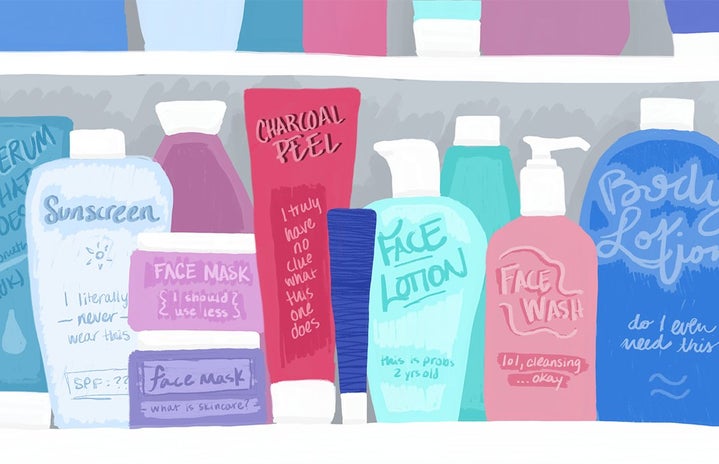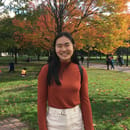I only began seriously taking care of my skin when I was around fifteen or sixteen years old, after I discovered Korean skincare. Like many others, Korean skincare was introduced to me by the popular 10-Step Korean skincare routine. First gaining popularity around 2014, the skincare regimen was largely popularized by Charlotte Cho, an esthetician who has her own Korean skincare retail shop, Soko Glam.
The 10-Step Korean skincare includes: makeup remover and oil cleanser, water-based cleanser, exfoliator, toner, essence, treatments, sheet masks, eye cream, moisturizer, and sun protection.
When I first read about the 10-Step Korean skincare routine, I thought I had found the cure to my worsening skin. At the time, I was having my first experience with acne; the extent of my skin concerns had been the rare pimple every so often before my later teen years. I slowly began purchasing more and more products and continued to add steps to my skincare routine.
There were numerous articles covering this new routine that seemed like a cure-all to everyone’s skin concerns. So many posts were made online raving about the 10-Step Korean skincare routine and how it had cleared up people’s skin. I wanted that to happen to me, too. I was insecure about my skin and desperately wanted to stop my continual breakouts. My skincare routine never reached the complete ten steps, but I was constantly rotating between various products with the thought that more products equaled an effective skincare routine.
This new fixation on the number of products I was using along with the constant search for new ones to try was a deep, dark hole I had fallen into. It was a detrimental habit to both my skin and my wallet, not to mention extremely wasteful. Despite all the product changes and skincare information I was consuming at the time, my skin was not improving. In fact, it began to worsen.
I didn’t take a step back and really think about what I was putting on my skin until a few years later when I entered my second year of college. Like how the 10-Step Korean skincare routine gained popularity, a new kind of skincare routine was gaining traction: the minimalist skincare routine. I decided giving my skin a break from the many products would be a good change for me. After all, my skin wasn’t improving no matter how many products I regularly applied.
Stripping my skincare routine down to the essentials (cleanser, moisturizer, and sun protection) did more for my skin in a month than the 7+ products I was rotating between before. I could visibly tell a difference in my skin texture, and it truly changed my perspective on skincare. I had always harbored the idea that more products would result in better skin, but I was finally able to realize that someone else’s “perfect” skincare routine did not guarantee my own positive experience.
Skincare is fun, and it is exciting to try new products. However, it took me many years and many products to finally understand what routine works best for me. Thankfully my skin has cleared up, and I am no longer always on the search for new products to include into my routine just for no reason. The biggest takeaway from my skincare journey is to take caution in jumping onto skincare trends; after all, it’s pretty clear that there is no one product or one routine that fits all.



